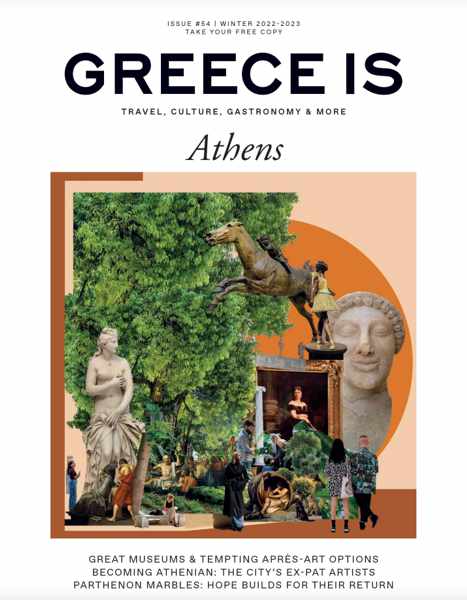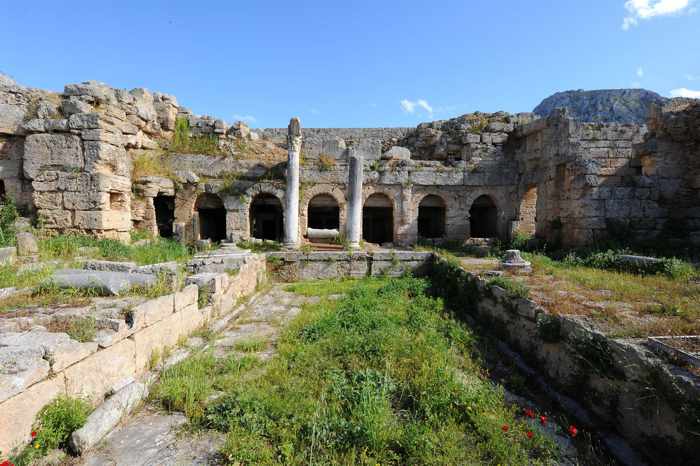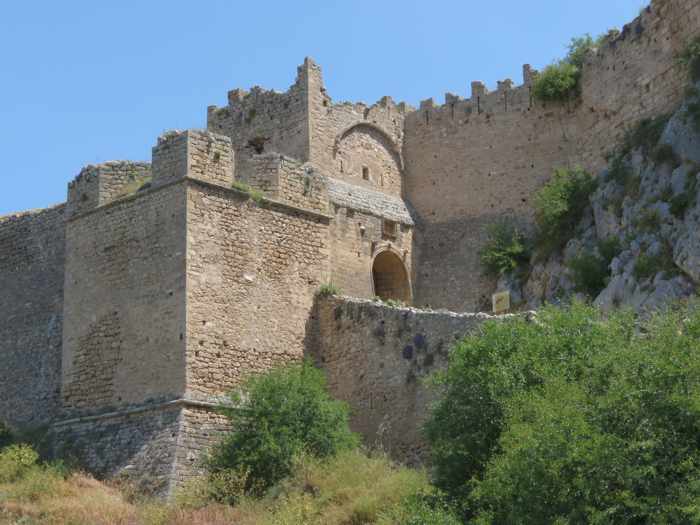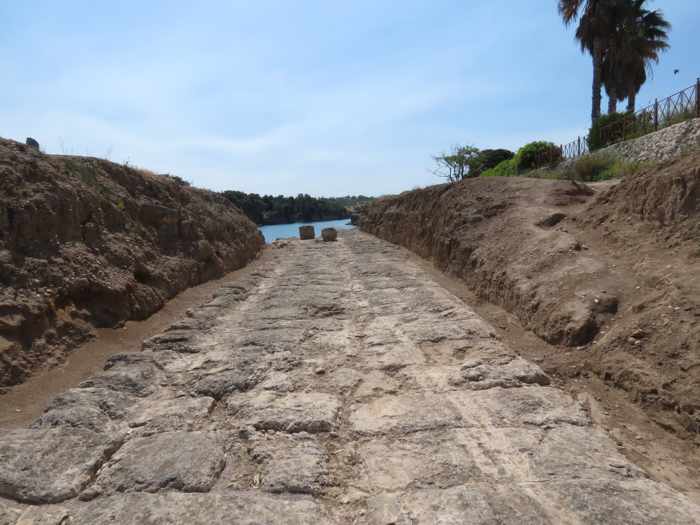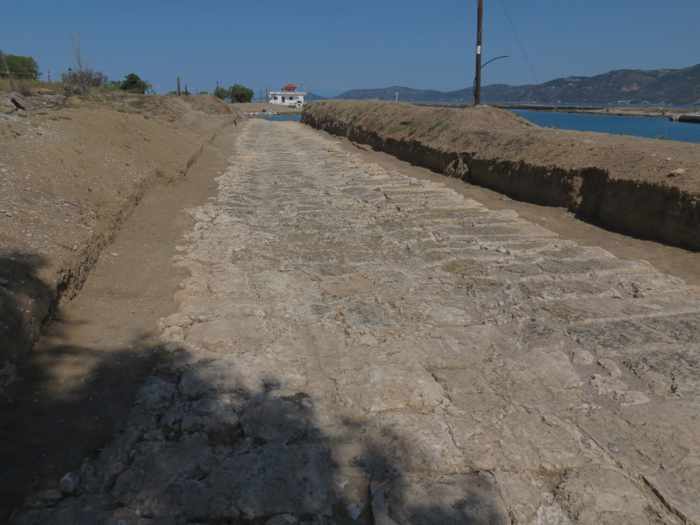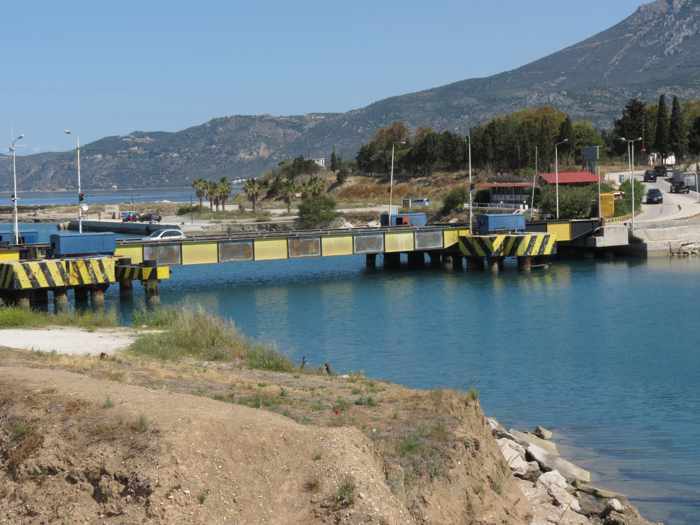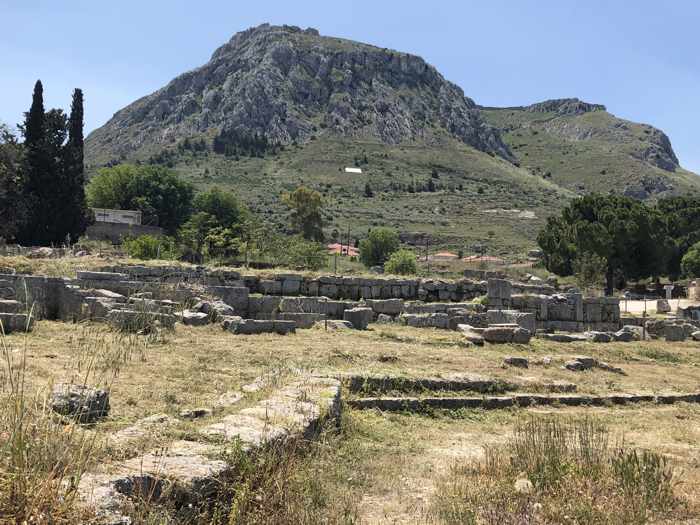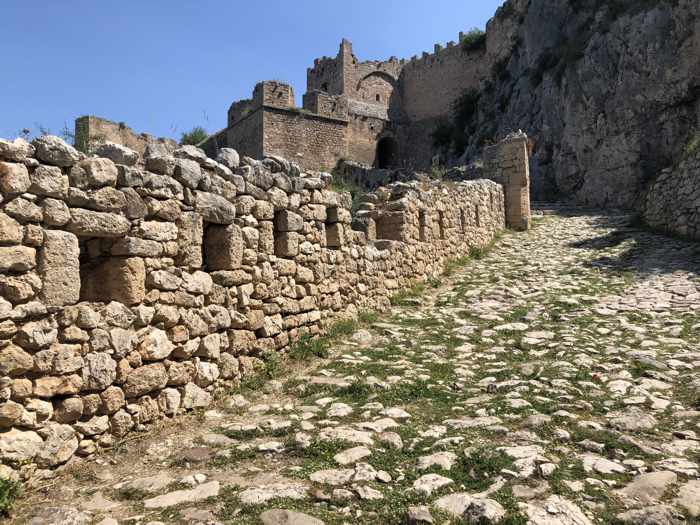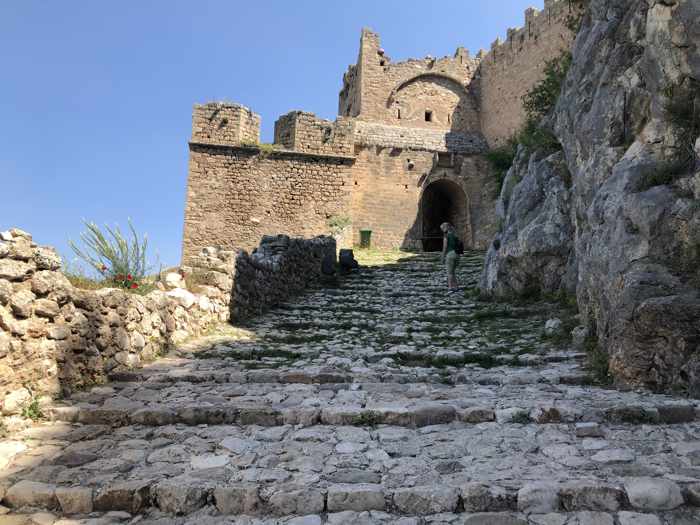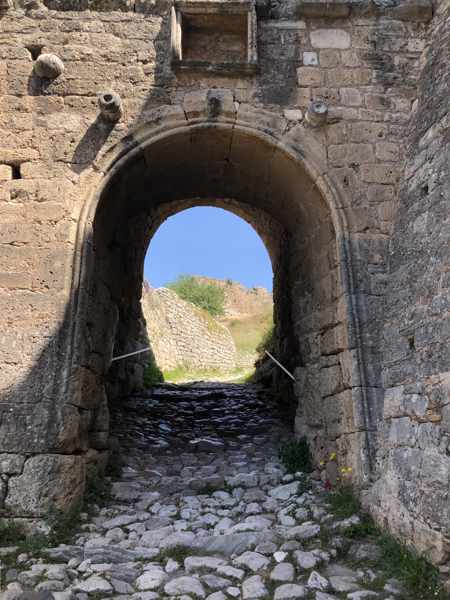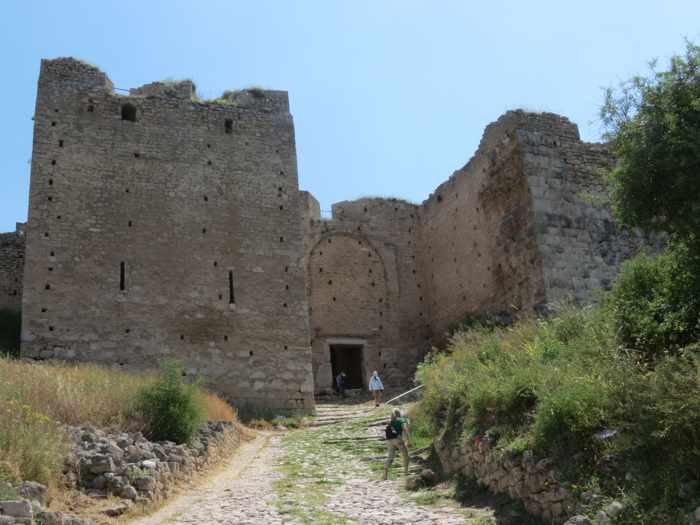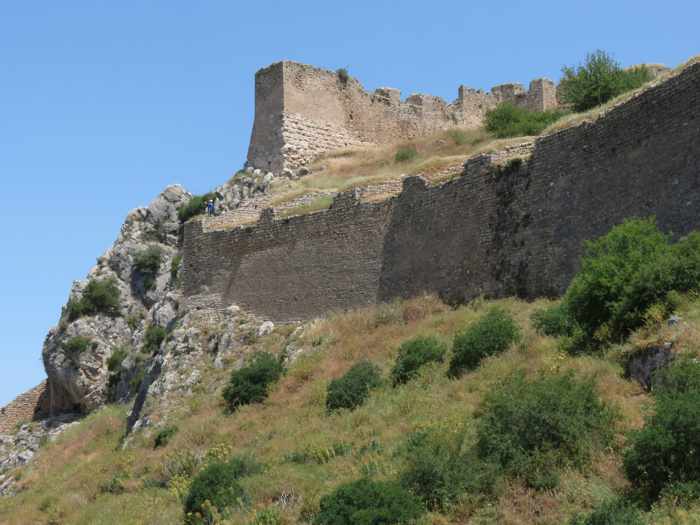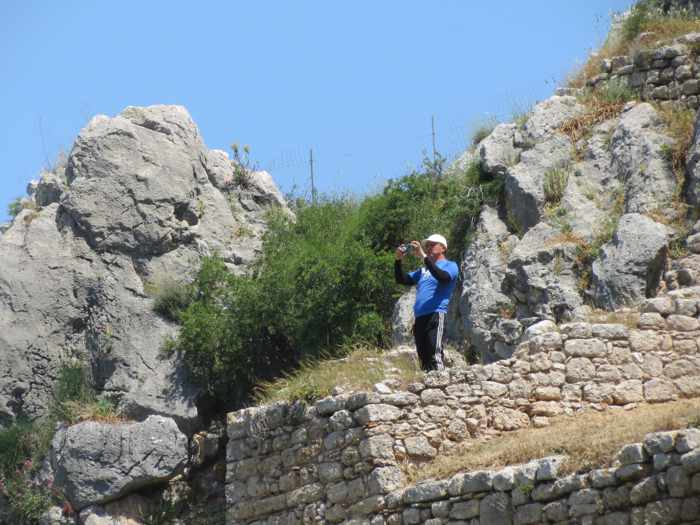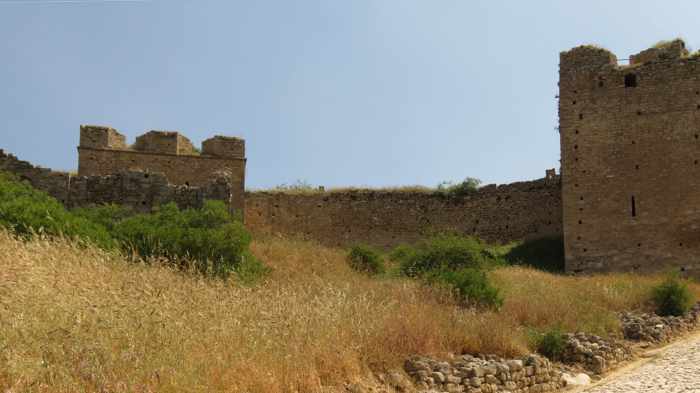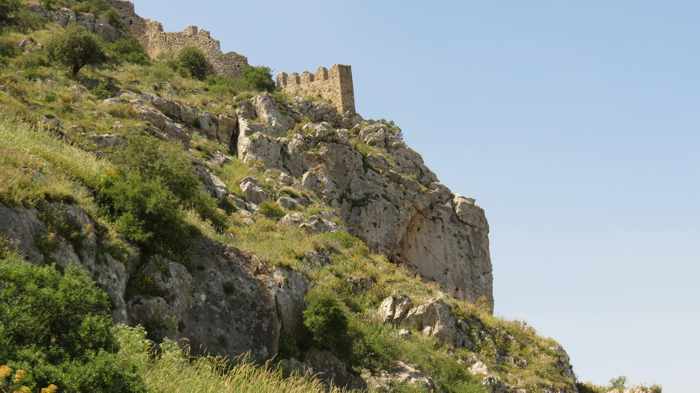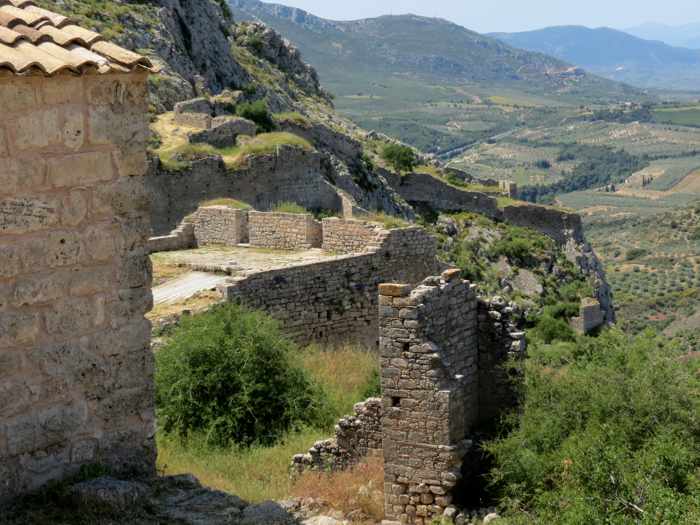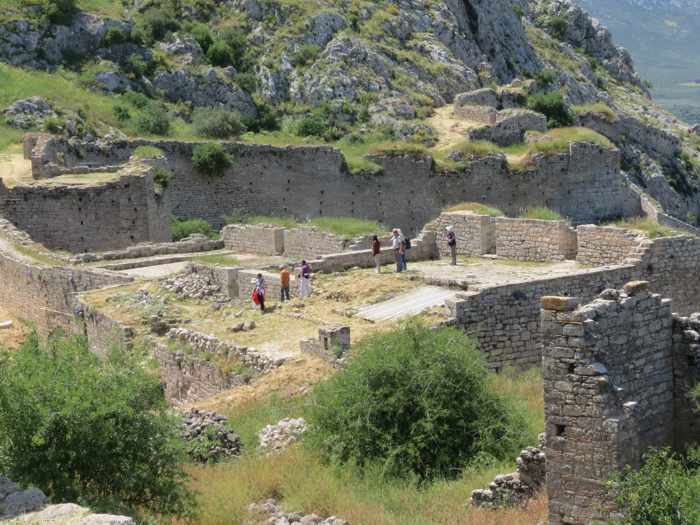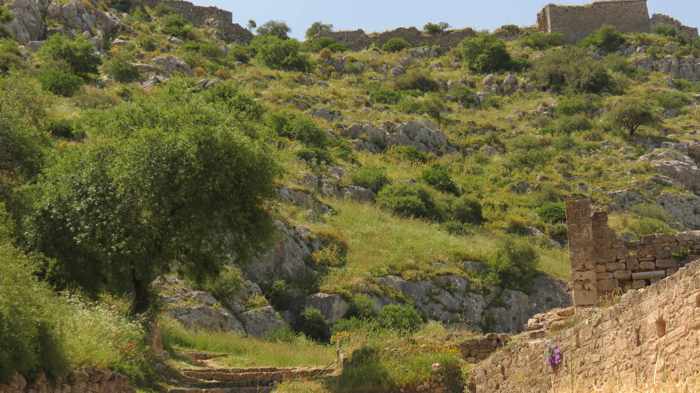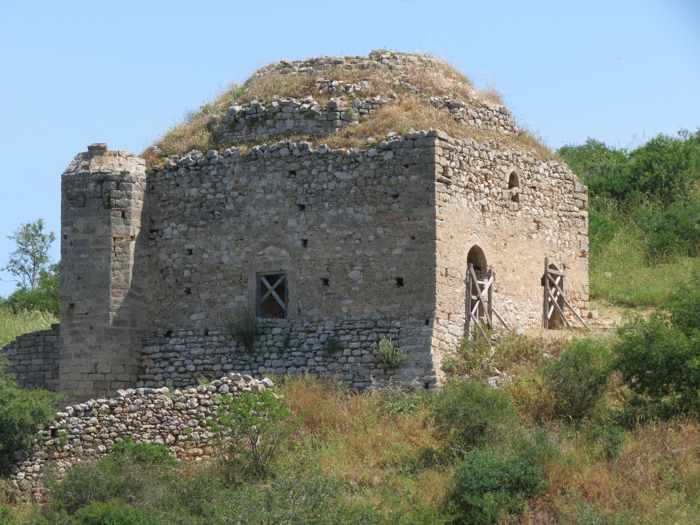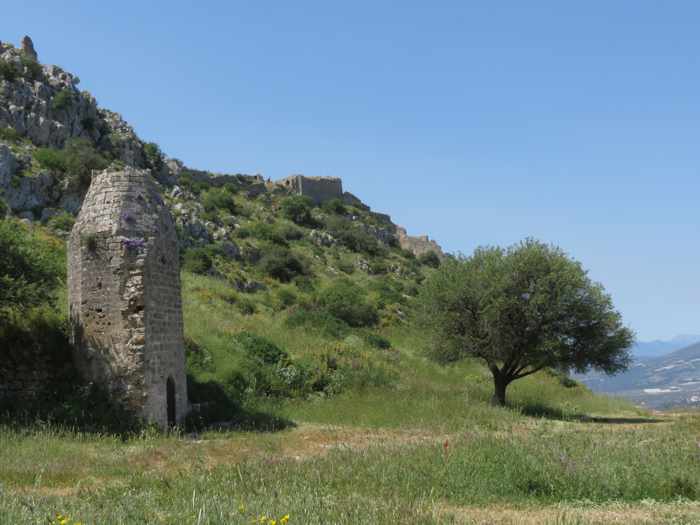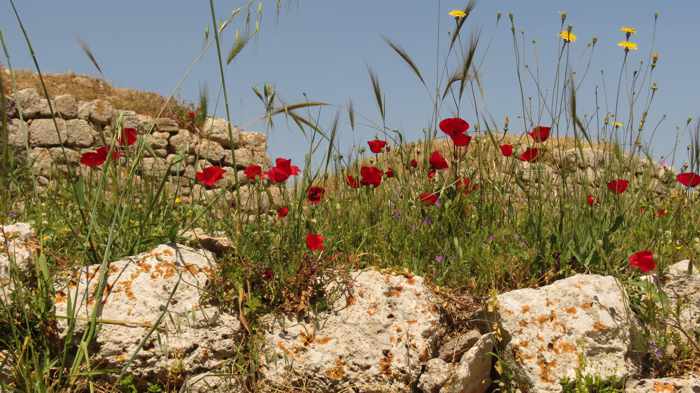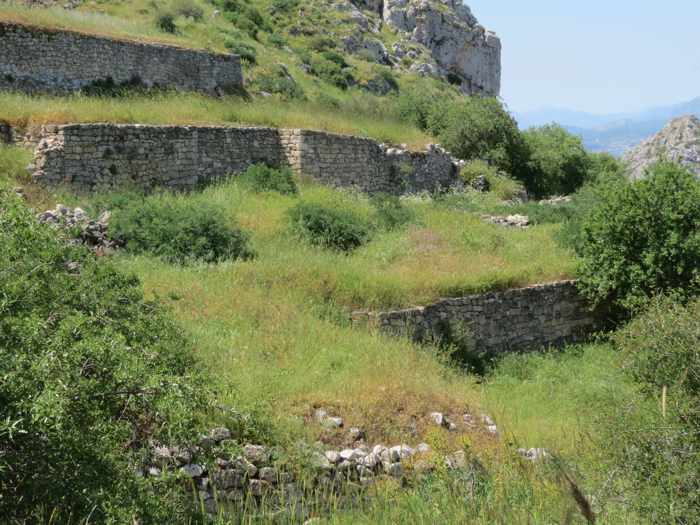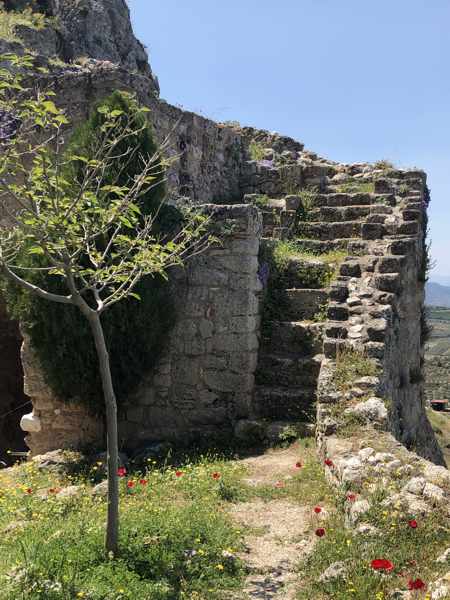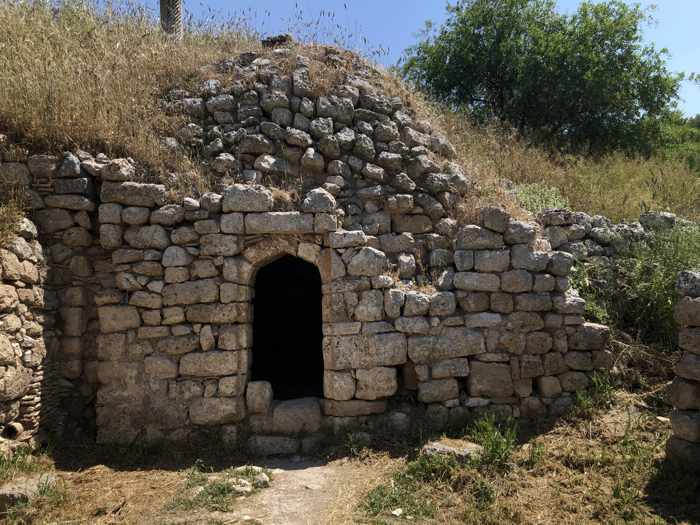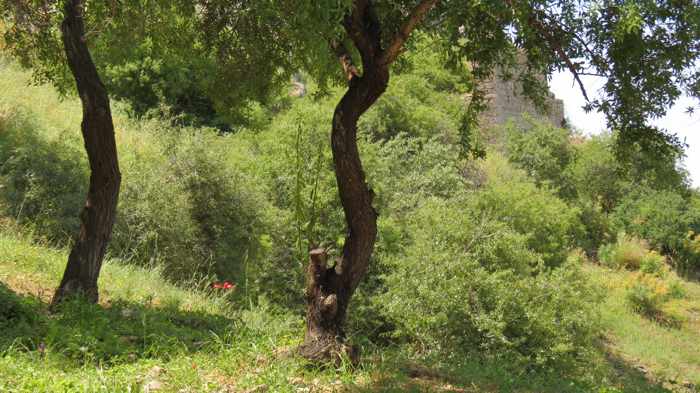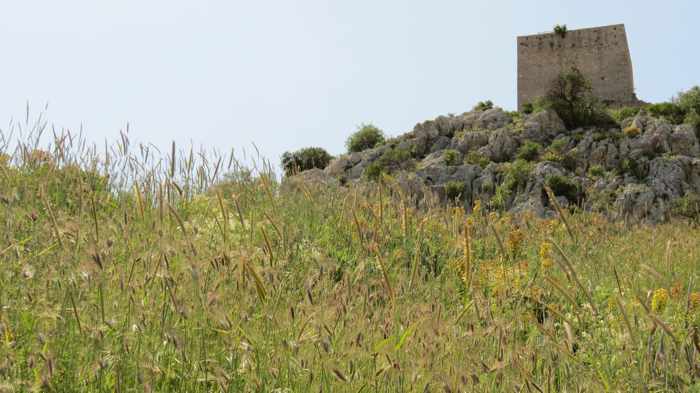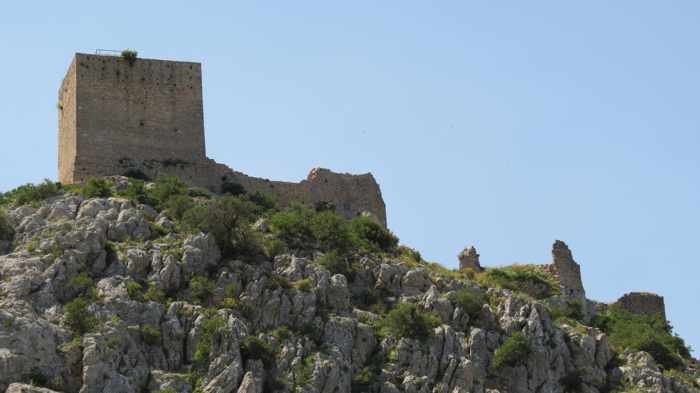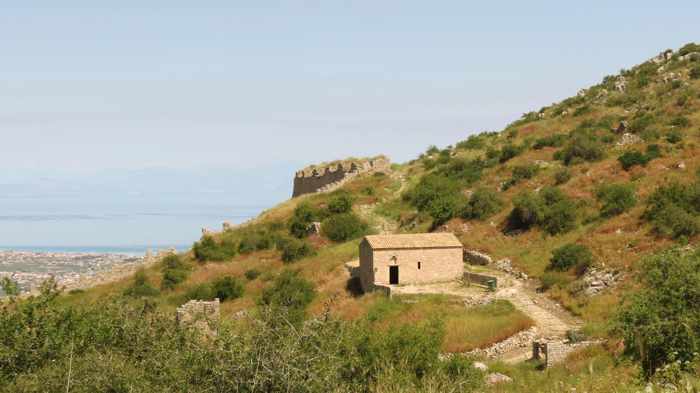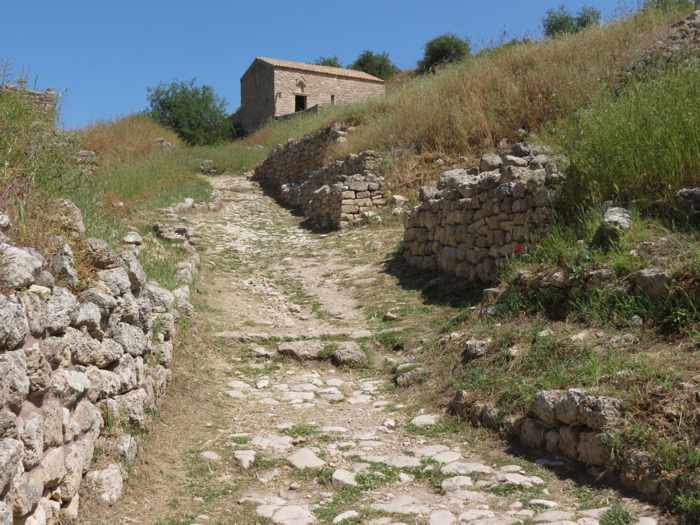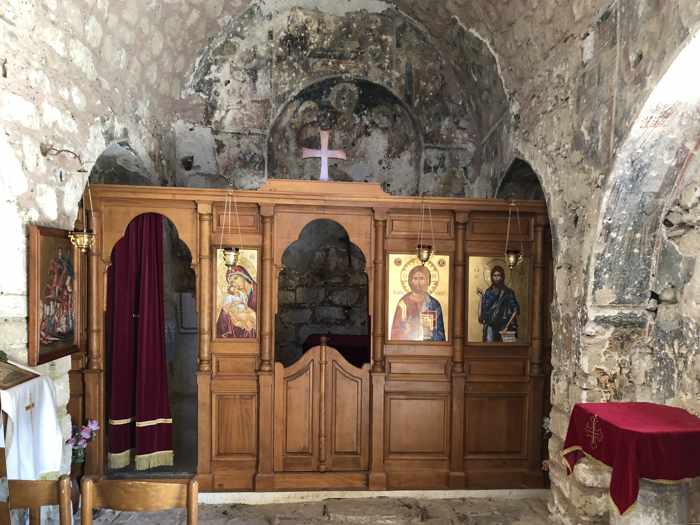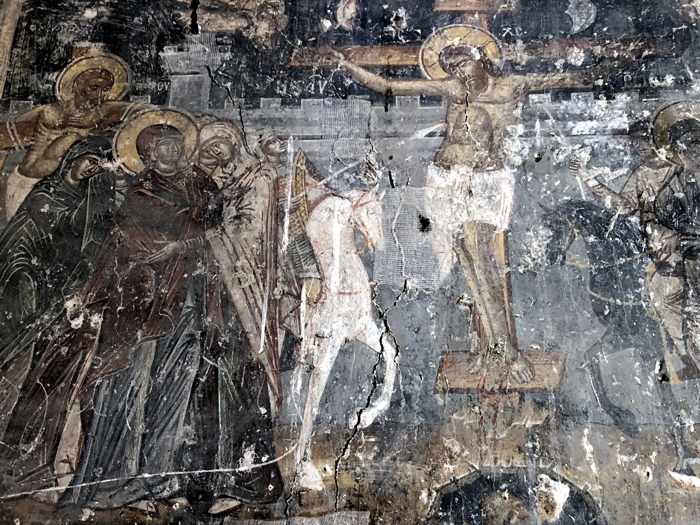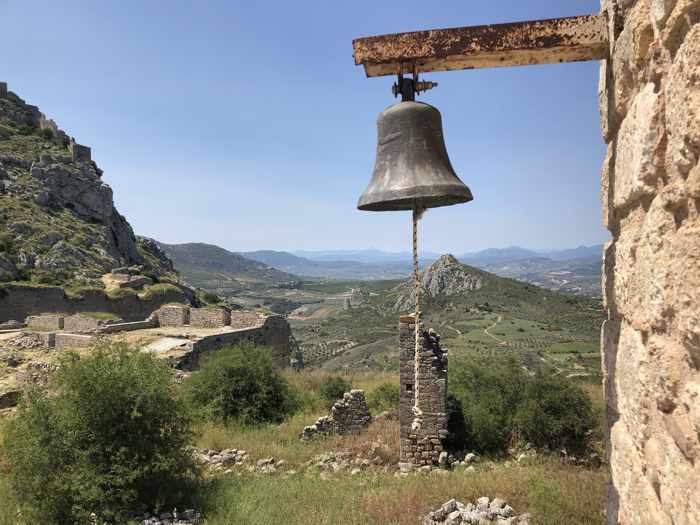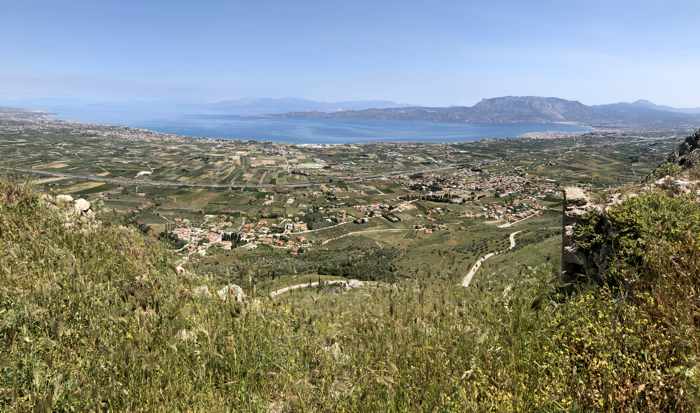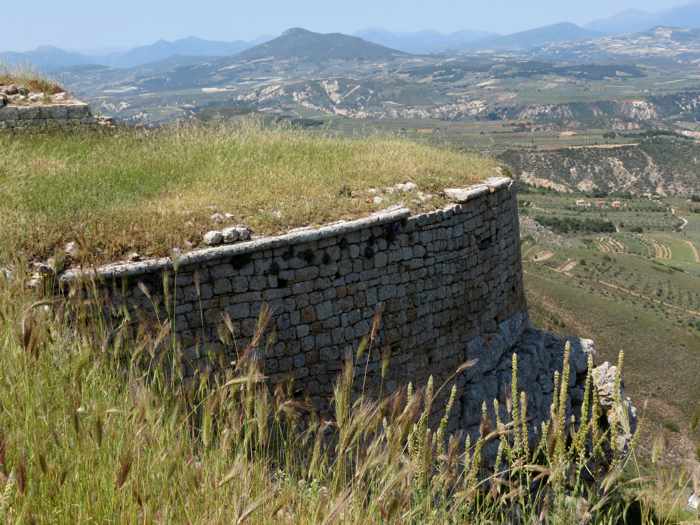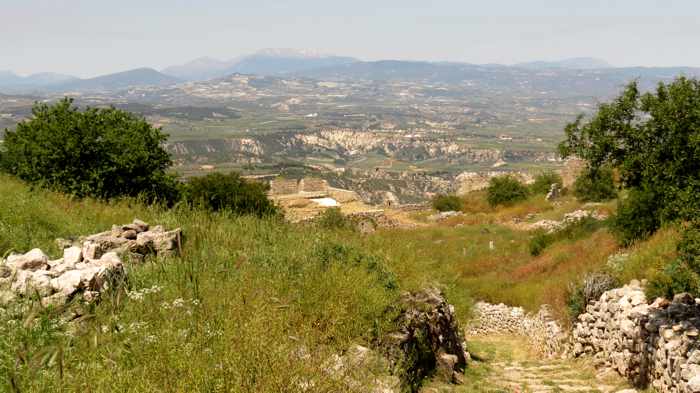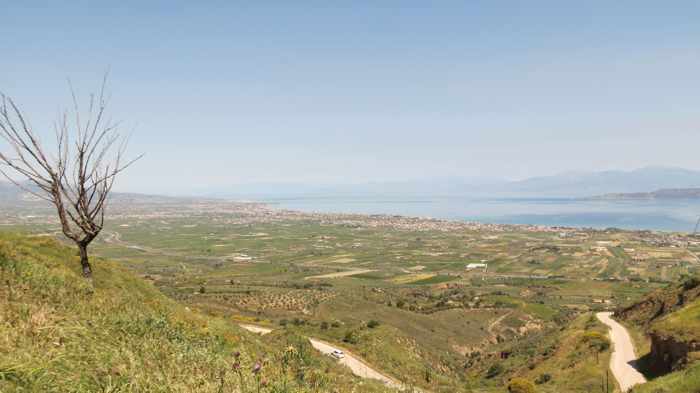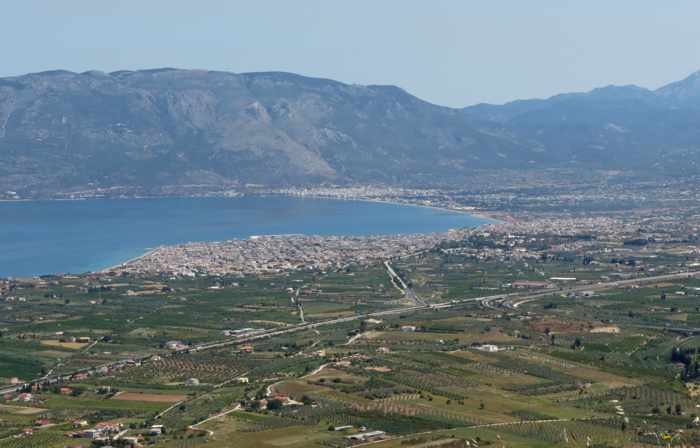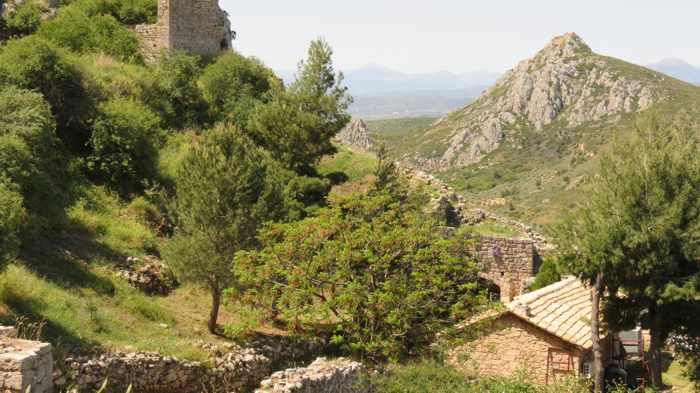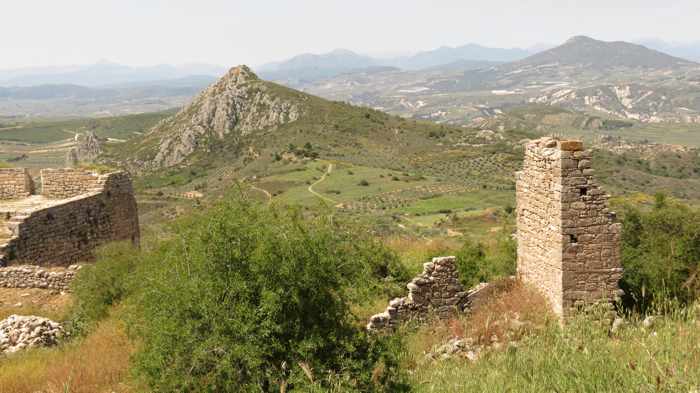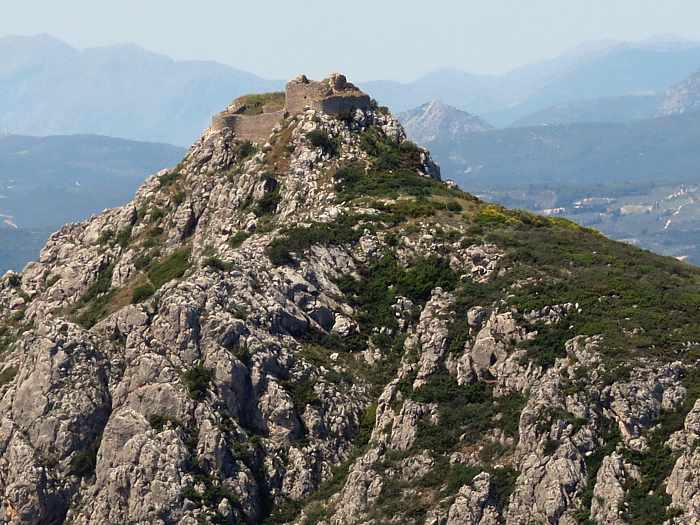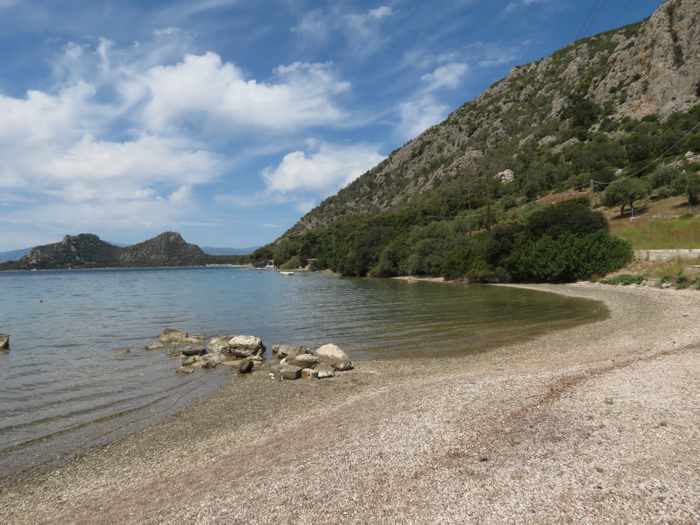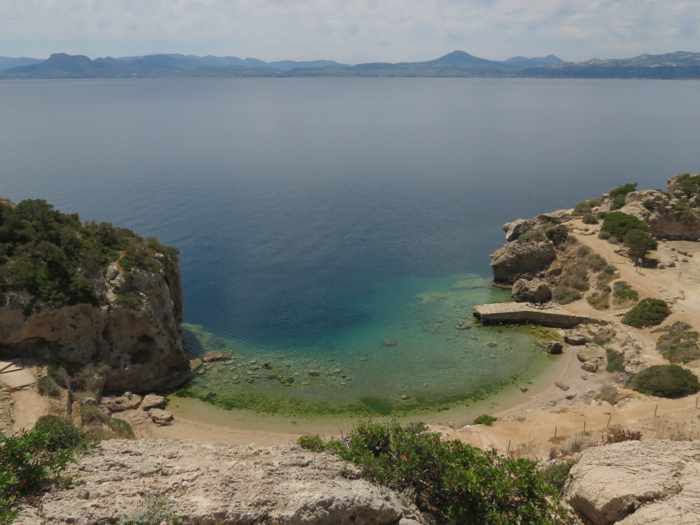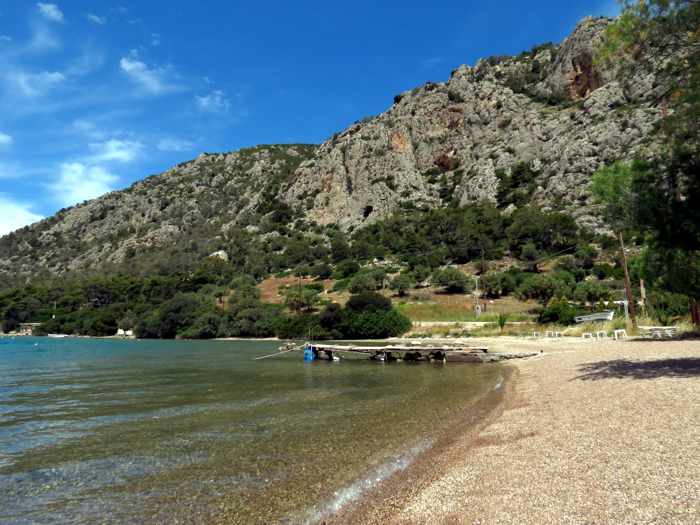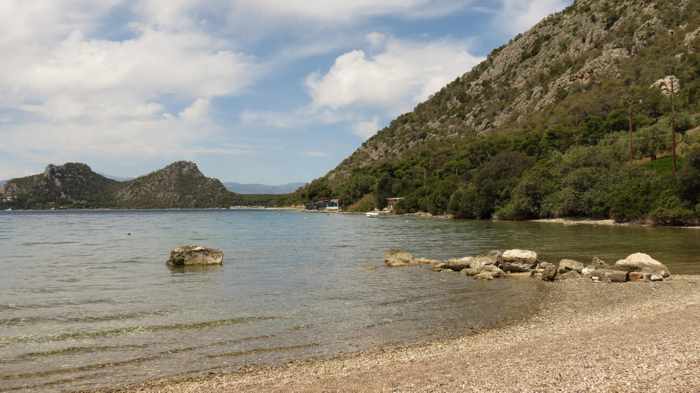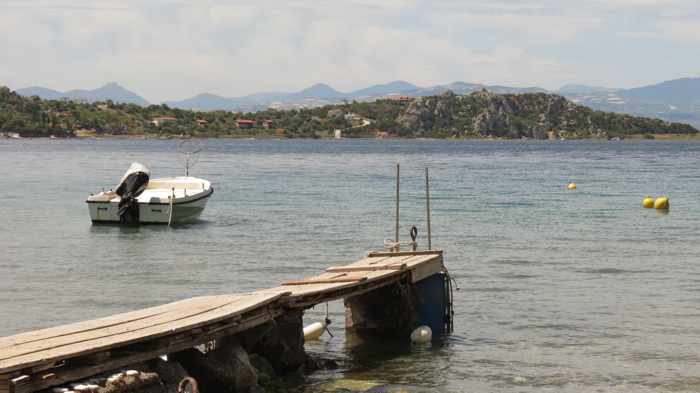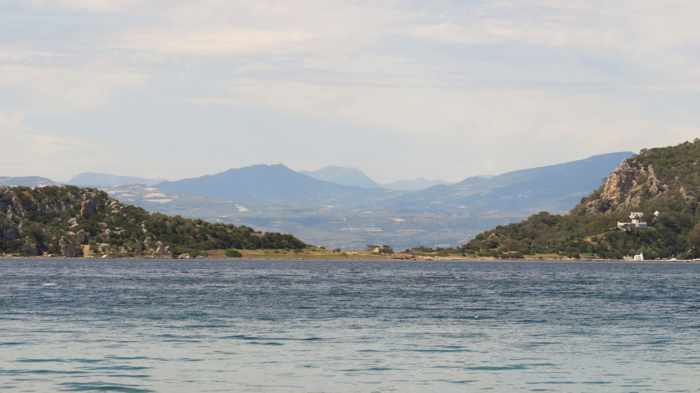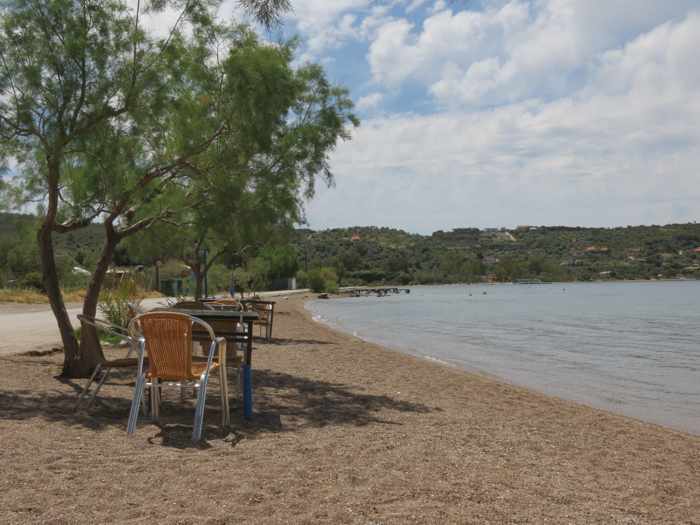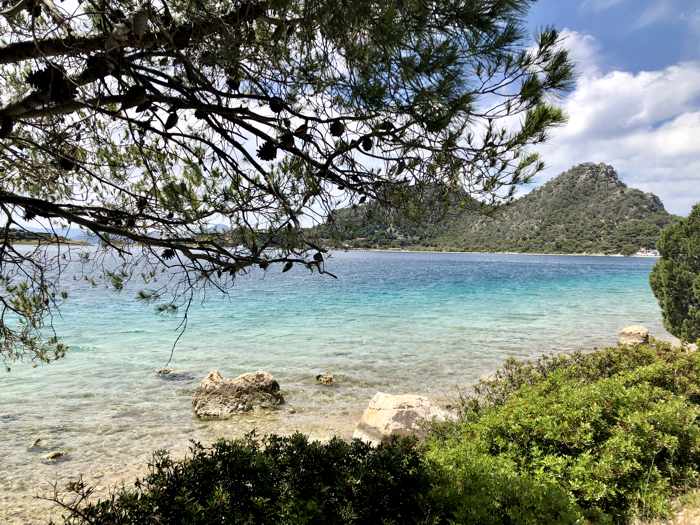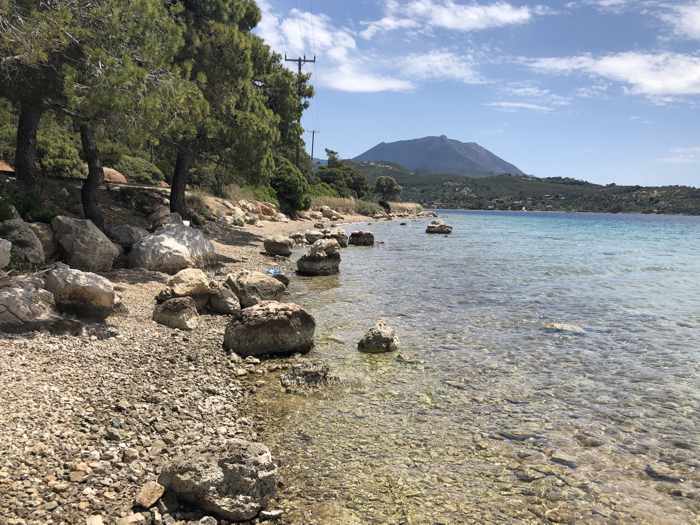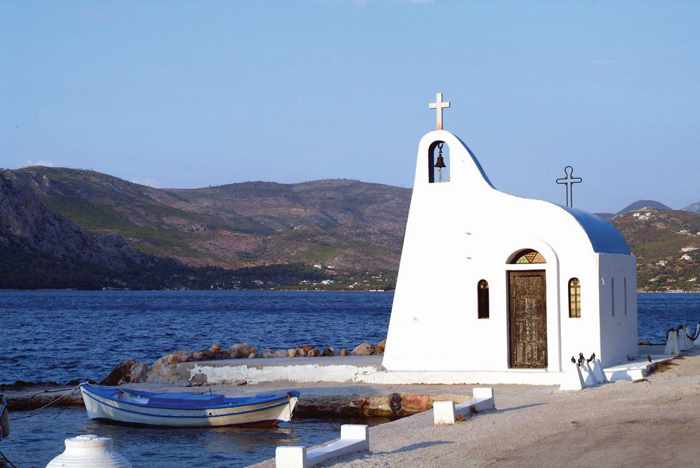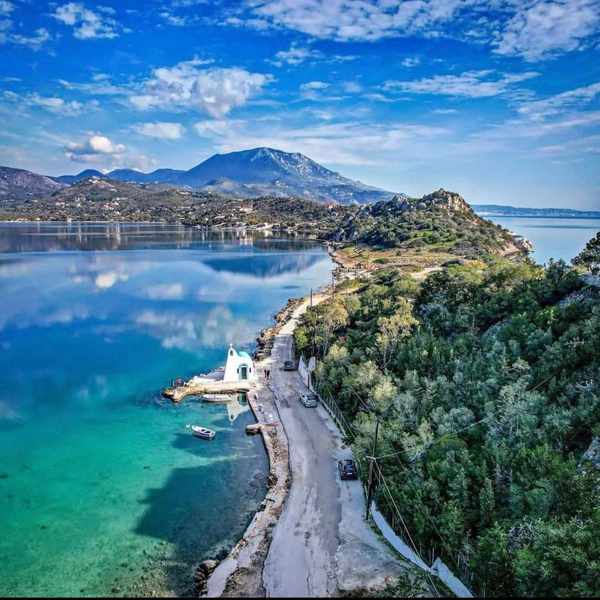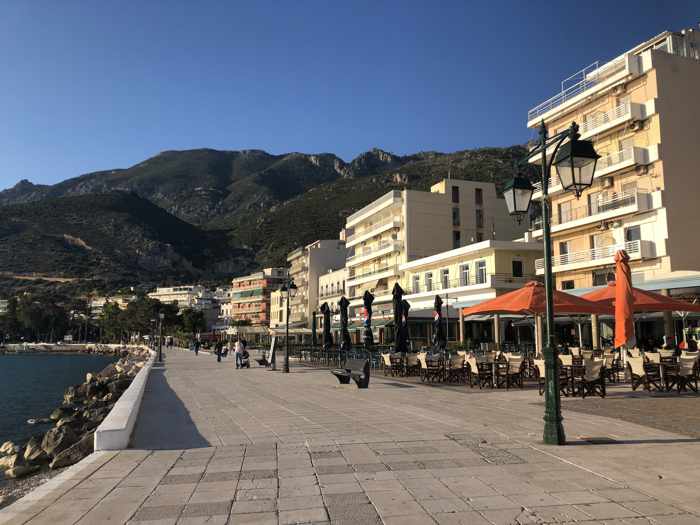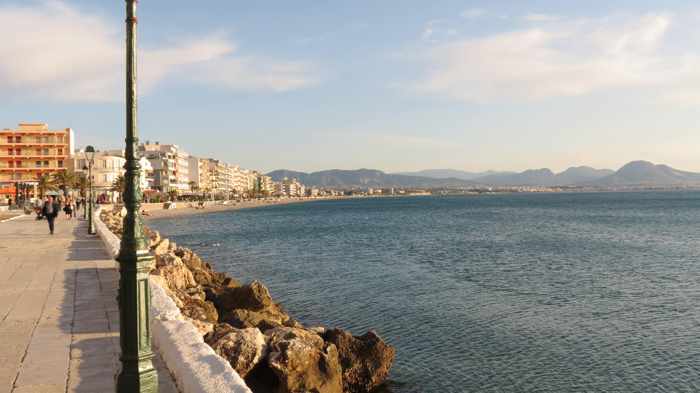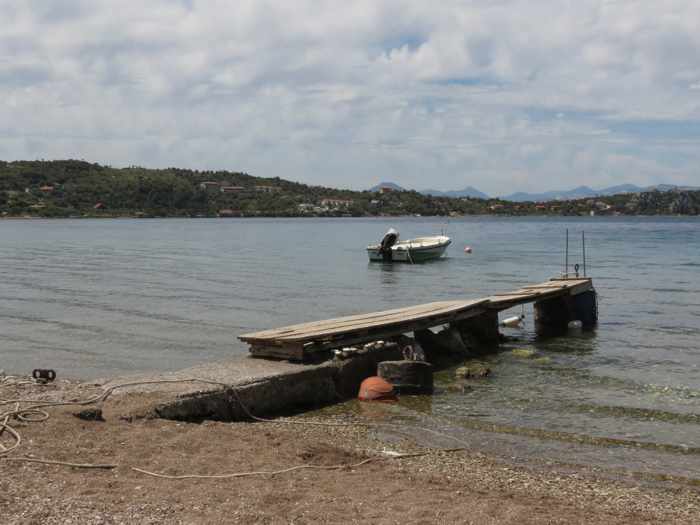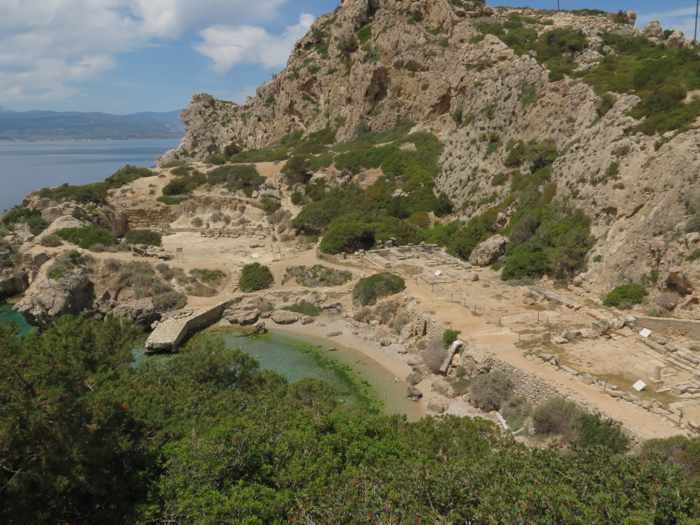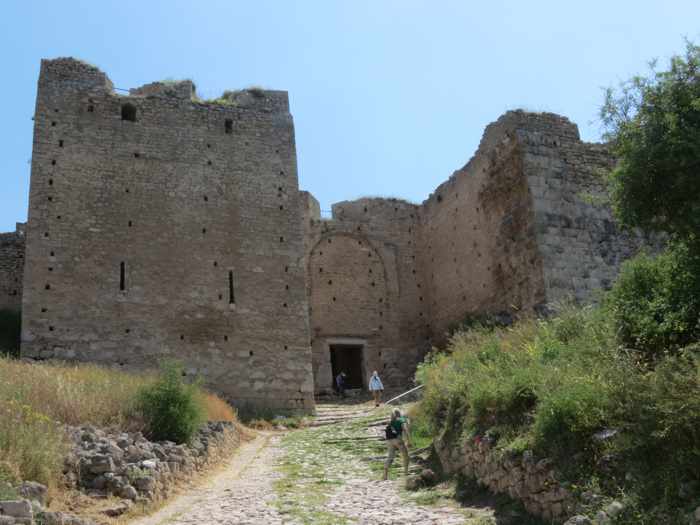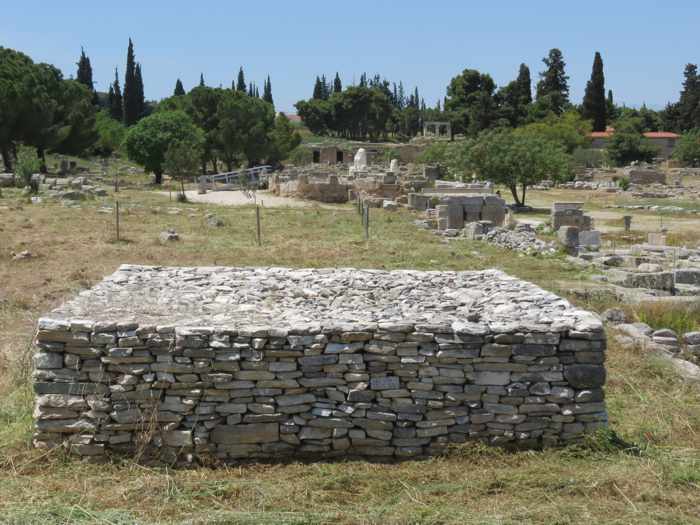Major arts and culture events on Mykonos during summer 2023
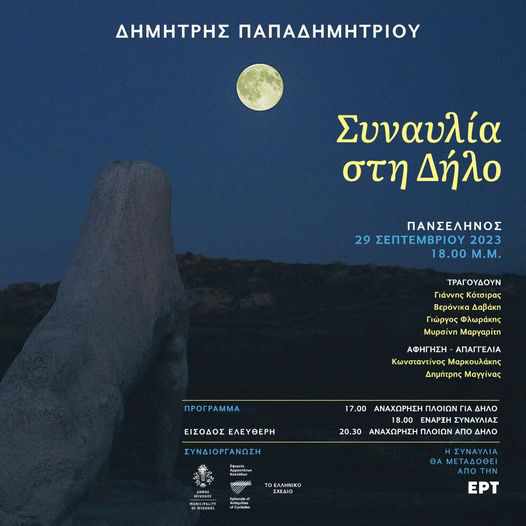
On Friday September 29, the Municipality of Mykonos, the Cyclades Antiquities Office, and the Greek Plan will present Dimitris Papadimitriou — Concert on Delos, a live music event featuring “Papadimitriou’s musical work on poems by Greek poets from antiquity to today.” The 2-part concert will take place on historic Delos island. The first performance, at dusk, will celebrate the Greek god Apollo, who in mythology was born on Delos island. The second part will be performed at nightfall, and will be dedicated to Artemis, the goddess of the moon. For this event, concertgoers can take boats departing for Delos at 4 and 5 p.m. The concert will commence at 6 p.m. The ferries will return to Mykonos after the performance, at 8.30 p.m. Tickets for the return boat ride cost €22 and will be available from the Delos Tours kiosks at both the New Port and Old Port. Further details can be found on the Facebook page for the local cultural organization , Kdeppam Mykonos.

On Wednesday September 27, the friends of the Mykonos Folklore Museum celebrate the re-opening of the Bonis Windmill agricultural museum following a lengthy closure for extensive restoration and repair work. The event will feature live entertainment, and takes place starting at 6 p.m. at the windmill, situated on the hillside overlooking Chora (Mykonos Town).
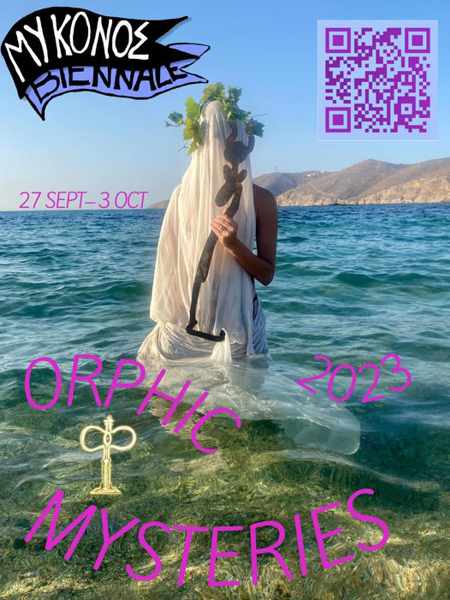
Mykonos Biennale is back for its 2023 series of art, drama, film and other cultural events based on this year’s theme, “Orphic Mysteries.” Check the Mykonos Biennale website for details of events and locations. The Biennale takes place from September 27 to October 3.
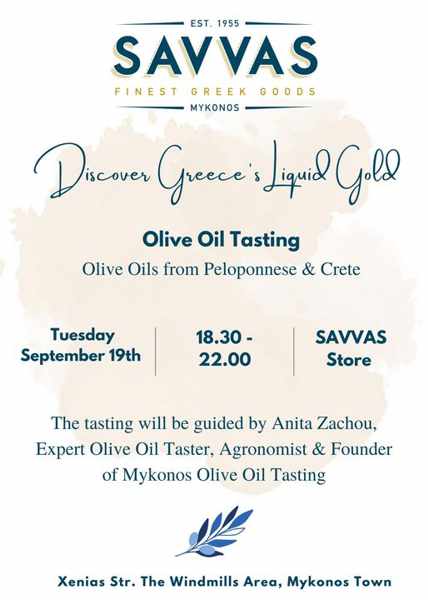
On Tuesday September 19, Savvas Finest Greek Goods in Mykonos Town will host an in-store olive oil tasting event presented by olive oil expert Anita Zachou
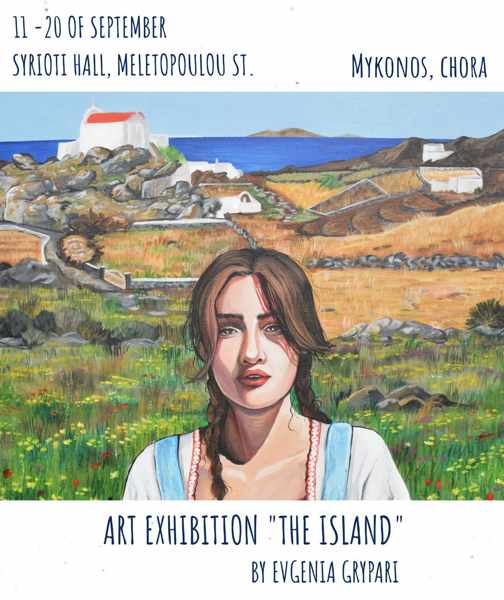
An exhibition of works by artist Evgenia Grypari will be presented from September 11 to 20 at Syrioti Hall on Meletopoulou Street in Chora
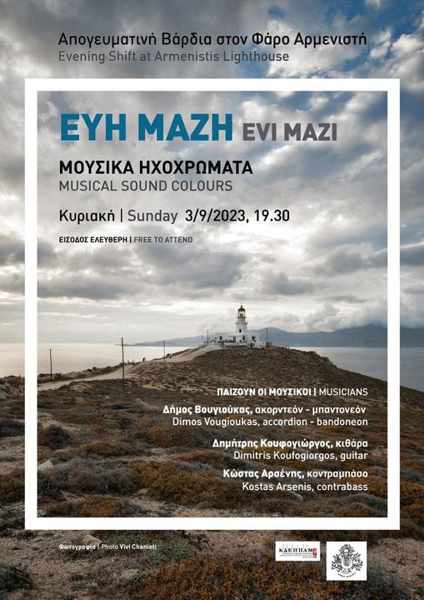
On Sunday September 3, local cultural organization Kdeppam presents a live sunset performance by singer – musician Evi Mazi at the historic Armenitis Lighthouse at the northwestern tip of Mykonos. Accompanied by musicians Dimos Vougioukas, Dimitris Koulogiorgos and Kostas Arsenis, Evi will perform songs from a wide range of styles and time periods. The performance starts at 7:30 p.m., and admission is free.

On Thursday August 10, Koukoumi Vegan Hotel in Ano Mera is hosting a vegan cooking class with chef Aggeliki Charami and chef de partie Anna Lymperi
 On Friday August 11, the local arts & culture organization KDEPPAM Mykonos presents a live musical interpretation of Alfred Lord Tennyson’s masterpiece, Enoch Arden. Published in 1864, Tennyson’s text was an inspiration to other artists including Richard Strauss who, in 1897, “wrote a unique composition for narrator and piano, inspired by Tennyson’s magical text. A touching and beautiful love story,” says a Kdeppam social media post describing the upcoming event. For this performance, “Pygmalion Dadakaridis takes on the role of narrator and the virtuoso soloist Thodoris Jovanakis accompanies him.” The show is being presented free of charge in the KDEPPAM Art Hall on Matogianni Street. The performance starts at 9 p.m.
On Friday August 11, the local arts & culture organization KDEPPAM Mykonos presents a live musical interpretation of Alfred Lord Tennyson’s masterpiece, Enoch Arden. Published in 1864, Tennyson’s text was an inspiration to other artists including Richard Strauss who, in 1897, “wrote a unique composition for narrator and piano, inspired by Tennyson’s magical text. A touching and beautiful love story,” says a Kdeppam social media post describing the upcoming event. For this performance, “Pygmalion Dadakaridis takes on the role of narrator and the virtuoso soloist Thodoris Jovanakis accompanies him.” The show is being presented free of charge in the KDEPPAM Art Hall on Matogianni Street. The performance starts at 9 p.m.
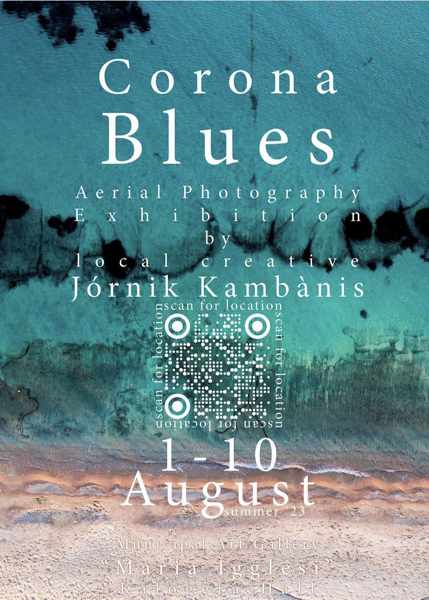
From August 1 to 10, the municipal Kalogera gallery hosts Corona Blues, an aerial photography exhibition by local artists Jornik Kambanis

On Friday August 4, Scorpios beach club launches its latest Encounters — In Resonance art exhibition, Echoes of Alhambra. a collaboration between new media artist Orkhan Mammadov and DJ/musician Lannka. “The historic Islamic architecture, calligraphy, fountains and gardens of the Alhambra in Andalusia provide an abundance of inspiring imagery for Lannka x Orkhan’s 250 digital artworks and data visualization piece,” the club says in social media posts announcing the event.

On Saturday July 29, Kapopoulos Fine Arts and The Art Dose are presenting a special “artistic evening” featuring an exhibition of select paintings and works by international artists. The event is being held in the lobby of the Cavo Tagoo hotel in Mykonos Town.
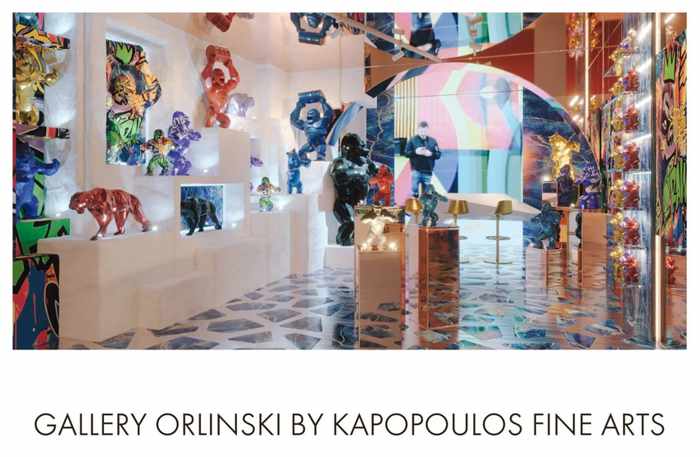
In July, Kapopoulos Fine Arts established an exclusive new gallery featuring works by acclaimed contemporary artist Richard Orlinski. Located at 48 Matthaiou Andronikou street, the Orlinski Gallery will celebrate its arrival on Mykonos with a grand opening event on July 20 at 9 p.m. The artist will be attending.
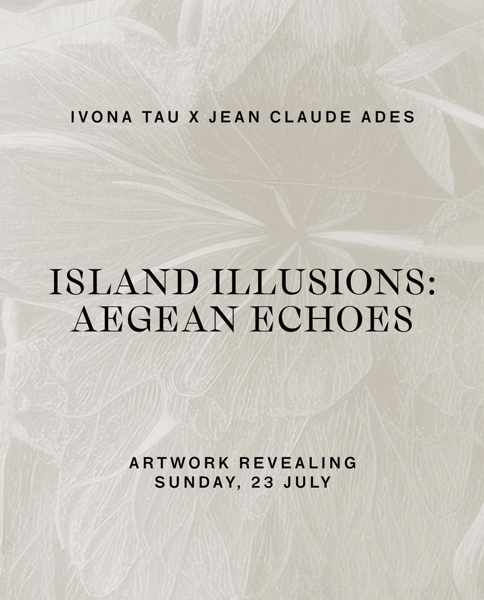
On Sunday July 23, Scorpios beach club reveals a new artwork as part of its summer music and art Encounters program. Island Illusions: Aegean Echoes is a collaborative work by AI artist Dr. Ivona Tau and DJ/Produceer Jean Claude Ades. “Combining AI art with electronic music, they depict the transformative power of nature. Ivona and Jean Claude explore the dance between the sea and the coast, while looking at the kinetic and constantly changing nature of the shoreline,” Scorpios says in a social media post announcing the event.
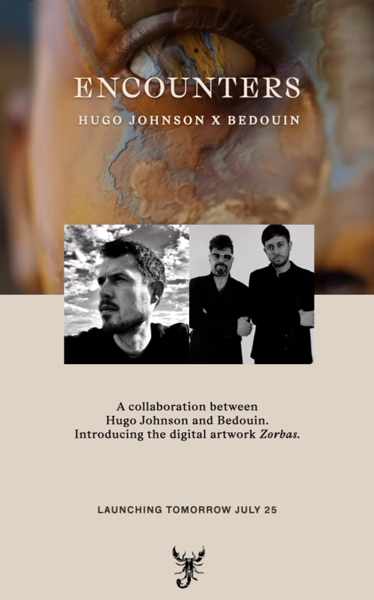
On Tuesday July 25, Scorpios presents Zorba, its second special artwork reveal of the week. A collaborative art project of DJ/Producer duo Bedouin and 3D artist Hugo Johnson, Zorba “offers a glimpse into the souls of storms, reimagining extreme weather patterns as human beings with unique identities. The star of the portrait series is Zorbas, the first cyclone to hit the Mediterranean,” Scorpios said in a social media post announcing the reveal.
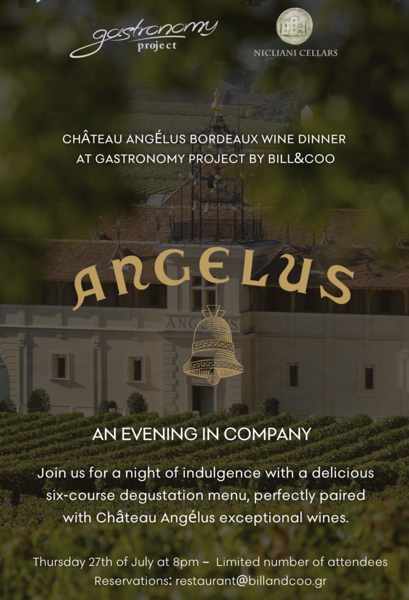
On Thursday July 27, Bill & Coo Mykonos Restaurant‘s Gastronomy Project will present a special six-course degustation menu paired with a “vertical tasting” of wines from renowned Chateau Angelus. Attendance is limited, so reservations are essential.
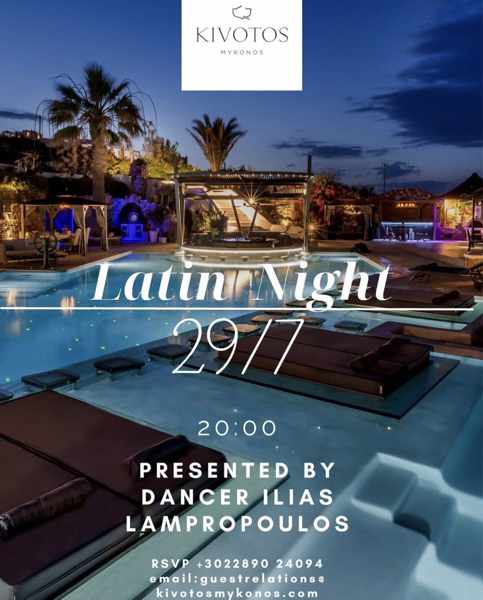
On Saturday July 29, Kivotos Hotel & Villas at Ornos Bay will be presenting a special dining and live entertainment event in its open-air poolside restaurant, Namah. The event starts at 8 p.m. and features “an exciting fusion of fine and creative Greek cuisine supervised by our executive Chef Christos Pedes, and Latin culture” highlighted by “lively Latin rhythms and spirited dancing,” the hotel said on its social media pages. There is a set menu for the dinner, and tables should be reserved by contacting the hotel’s concierge / guest relation team by telephone at: +30 22890 24094
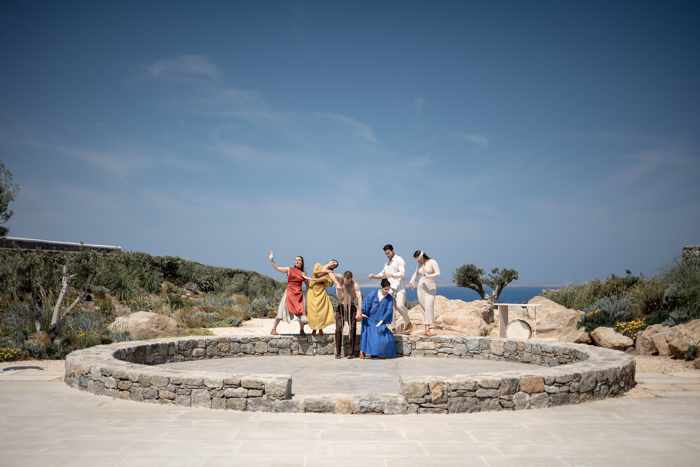
Every Thursday during July, Kalesma Hotel is presenting The Light of Apollo, “a first-of-its-kind performance art project that explores divine inspiration, the mythological element and the island of Mykonos itself.” Created and performed by the Tracing Echoes Project, The Light of Apollo is a unique immersive show that combines contemporary dance, music and movement. “The play rekindles the flame of classical Greek mythology through a new retelling of the myth of Apollo – the god of music and light – as the show revives seminal stories of the past in an exciting, multi-faceted ritual,” says a media release announcing the shows. “Throughout the event, the boundaries between performer and observer will be broken down, as attendees find themselves surrounded by dancers, actors and musicians. From classical theatre to an al fresco feast of local cuisine, the show will proudly shine a light on authentic island tradition. With the sacred island of Delos on the horizon, The Light of Apollo transforms the resort and its guests into essential characters in the performance. Together, they build a bridge connecting Mykonos to Delos, the historical with the contemporary, the earthly with the divine. The show is thus a homage to this legacy, a celebration of land and legend and Mykonian visionaries past and present,” the announcement explains. The play is presented in the morning from 10 a.m. to noon at the hotel’s Pere Ubu Mykonos restaurant, and continues in the evening from 8 to 8:45 p.m. at Kalesma’s Aloni Sunset Lounge. The performances are open to hotel guests as well as visitors staying elsewhere on the island.
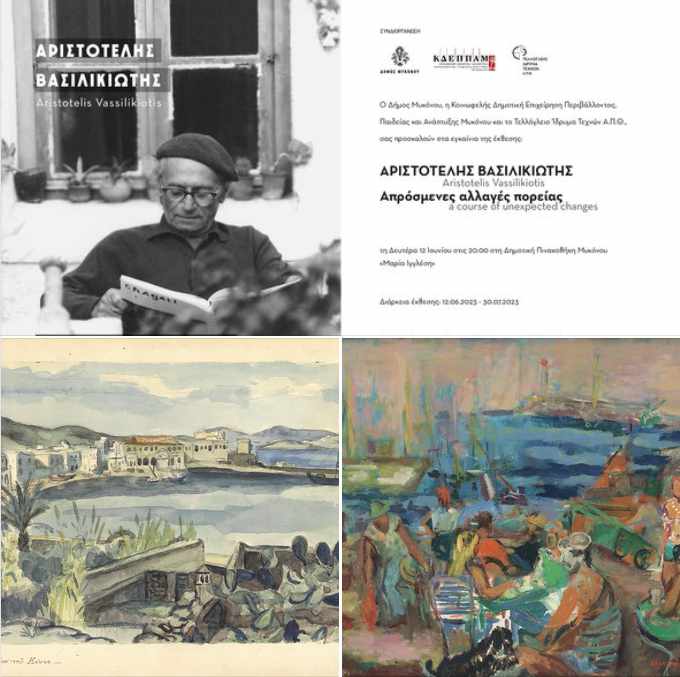
From June 12 to July 30, the Mykonos Municipal Art Gallery is hosting two artistic tributes to the painter Teli Vassilikioti — the special exhibition “Aristotle Vassilikiotis: Unexpected Changes of Course,” and the permanent exhibition “Aristotle Vassilikiotis: 1902-1972.”

The Mykonos Art Festival 2023 takes place from June 30 to September 24. The annual summer event presents an extensive variety of art and music entertainment geared to all ages, at venues across Mykonos and on Delos island. Click here to view the full festival program.
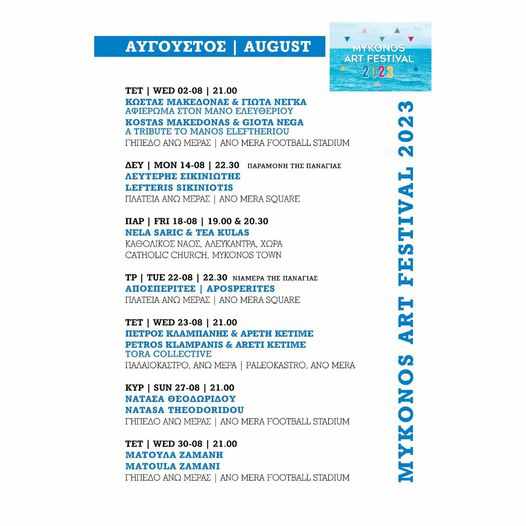
This is calendar of Mykonos Art Festival 2023 events scheduled for August
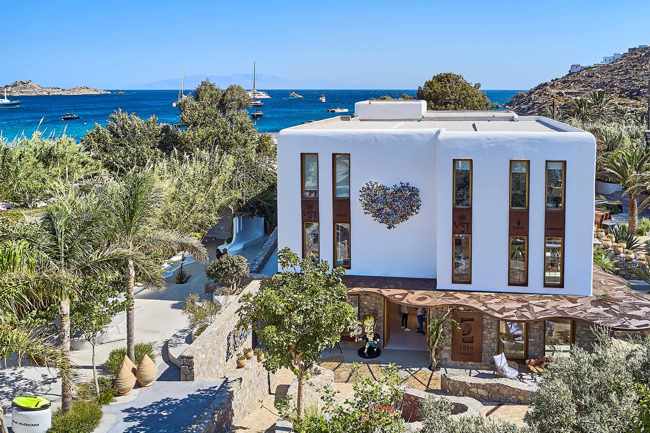

On July 12, Eden Gallery at Nammos Village launched its annual Mykonos Summer Event Series. The program, which runs until August 12, will feature nine events showcasing 12 of the gallery’s exclusive contemporary artists. The popular Eden Gallery events are among the highlights of the Mykonos summer art scene, and offer “a captivating blend of art, culture and entertainment,” the gallery noted in a media release announcing the program.
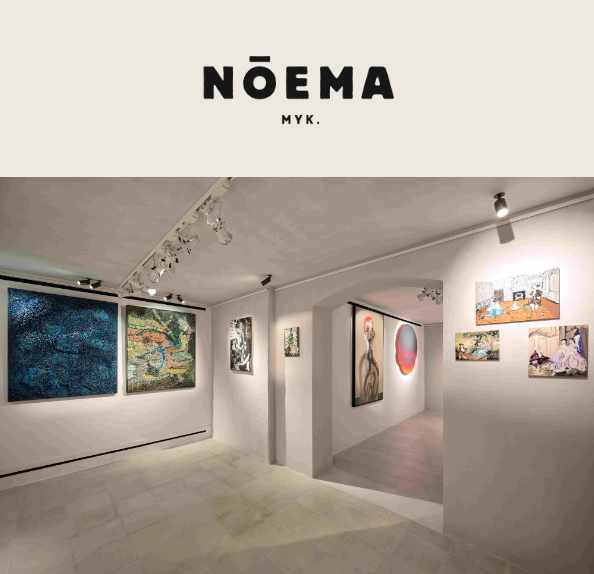
For summer 2023, the gallery at Noema Mykonos restaurant and bar is exhibiting an array of “breathtaking artwork from a selection of emerging and established artists,” in a special collaboration with HOFA Gallery. Noema is located in the Panachra neighbourhood of Chora (Mykonos Town), and its gallery is open daily from 8 p.m. to 1 a.m. Information about the gallery, and a link to a PDF profile of the artists and works featured in the exhibition, can be found at this page of the Noema website.
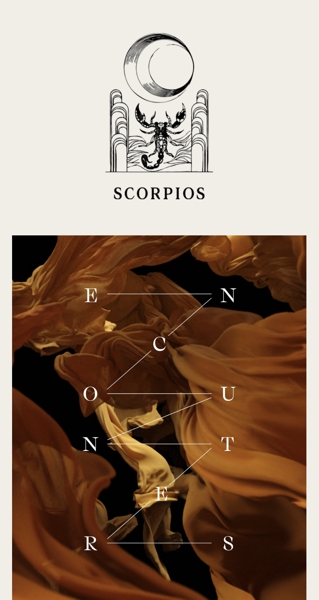
Already world-renowned for its fine dining restaurant and its incredibly popular sunset music rituals and other consciousness-raising gatherings, Scorpios beach club will make a distinctive mark this summer on the international contemporary art scene. For 2023, the club is introducting Encounters, its “new platform for cultural experimentation.” The In Resonance art program — which will spotlight artists and musicians who resonate together” — is set to run from July 13 to September 4. “From a series of art installations and live performances, to opportunities to collect innovative, experimental artwork, Scorpios will take you into the heart of the digital art movement,” the club said in a news release announcing the initiative. Further details about the art program can be found on the Encounters page of the Scorpios website.
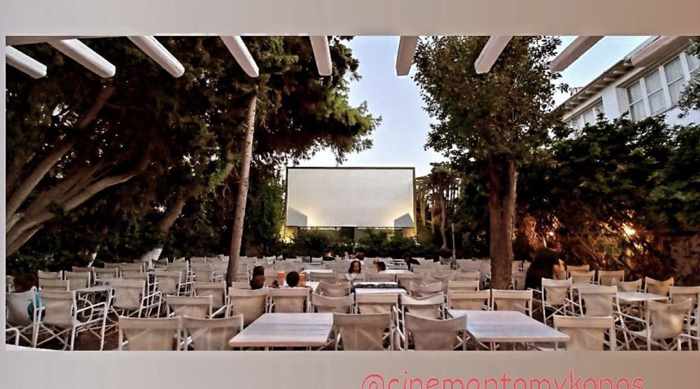
May 19 was opening day for Cine Manto, the open-air cinema tucked into a hidden garden oasis in the heart of Mykonos Town. The cinema plays first-release movies in their original versions, usually in English, starting at 9 p.m. daily. The cinema also is home to an all-day cafe-bar where visitors can escape the summer heat and crowds to relax with a coffee, drink or meal.
Past events

The Matsuhisa Mykonos “new style” Japanese fine dining restaurant at the Belvedere Hotel celebrates its 20th anniversary this year, and will hold its annual Nobu Festival from June 27 to July 2. The Festival offers an exclusive culinary experience with Chef Nobu Matsuhisa and guest sushi masters, and this year will also celebrate the grand opening of the restaurant’s Omakase Bar.
Here is the schedule for music performances taking place on the evening of Friday June 30, opening night for the Mykonos Art Festival 2023:
♦ Entertainment gets underway at 6 p.m. at the Old Port, below the Mykonos Archaeological Museum, with a performance by World Music Duo (Periklis Aliopis on trumpet and Vasilis Tziatzias on guitar);
♦ At 6:30 p.m., at Mykonos Town Hall, The Storyville Ragtimers band will perform;
♦ At 7 p.m., vocalist Kelly Kaltsi will sing at Paraportiani church;
♦ At 7:30, guitarist Charitini Panopoulou will play at Melkis Axioti Square;
♦ At 8 p.m., the violin and harp duo Music ΚonTin-entity will perform at the Mykonos Municipal Gallery KDDEPAM;
♦ At 8:30, the O&K Classical Music Quartet will play at the Municipal Library, and
♦ At 9 p.m. the brass and percussion ensemble Metallon Quintent will perform at Manto Square, where official opening ceremonies for the festival also will take place.
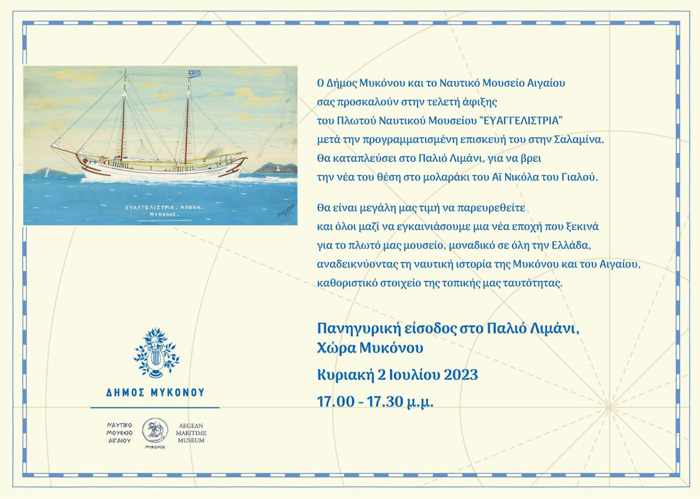
Here’s a not-to-be-missed event for any ship or maritime history enthusiasts visiting Mykonos on Sunday July 2. At 5 p.m. that day, a special ceremony will take place at the Old Port in Mykonos Town to welcome the return of the island’s beloved cargo ship, Evangelistria. Built in 1940, Evangelistria transported cargo throughout the Aegean islands until 1978, when she was decommissioned and left in drydock for nearly 11 years on nearby Syros island. Out of the sea for so long, Evangelistria quickly deteriorated. The founder of the Aegean Maritime Museum in Mykonos, George Drakopoulos, persuaded the ship’s owner to donate the vessel to the museum and the island municipality so it could be restored and maintained as a floating maritime museum. Evangelistria is returning to Mykonos after undergoing repairs at a shipyard on Salamina island. The brief welcoming ceremony will take place at the Old Port, near Ai. Nikolaki of Kadena, the charming little blue-domed church near Mykonos Town Hall. Afterward, the boat will be open to the public for tours.
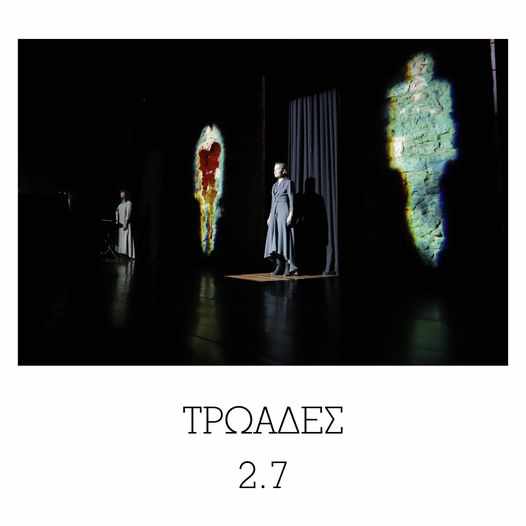
On Sunday July 2, Mykonos Art Festival presents Troades, a tragedy by the ancient Greek playwright, Euripides. (The play also is known by the titles The Trojan Women and The Women of Troy.) Directed by Violet Louise, and featuring Aglaia Pappa in the role of Ekavi, this performance “is a modern adaptation of the poetic text where sound, music and image coexist creatively,” a festival event announcement says. The production will be staged at the entrance to the Monastery of St. George in Ano Mera, where the cast of three actors will “tell the tragic story of the war and as the only survivors they mourn in the deserted city of Troy.” Start time is 9 p.m.

On Monday July 3, Alissachni Mykonos Hotel is holding a Mexican night with music and a special menu created by Chef Psomopoulos Stavros. The hotel is situated on a hilltop in the Agios Lazaros area of the island, overlooking Psarou beach. Contact the hotel directly at +30 2289024669 for reservations or further information.

From July 2 to 9, Buddha-Bar Beach Mykonos presents Cocktails Week with special guest Francesco Galdi, the Buddha-Bar Group’s corporate beverage manager. “Ιnfluenced by his early exposure to his grandparents’ bars and restaurants, and guided by the DNA of Buddha-Bar’s concepts, Francesco’s cocktails become a liquid expression of travel, perfumes and traditions, seamlessly fused with cutting-edge techniques,” says a social media announcement for the event. Buddha-Bar Beach Mykonos restaurant and bar is situated in the Santa Marina Resort at Ornos.

From July 6 to 10, Kapopoulos Fine Arts on Enoplan Dinameon Street will present the solo exhibition of 17 works by L.A.-based, Paris-born experimental and digital artist Punk Me Tender. The artist will be attending the opening night reception on July 6.

On July 13 and 14, Scorpios presents Refik Anadol X The Yawanawa, the first event in its Encounters — In Resonance arts and music program for summer 2023. Anadol, an award-winning media artists, and the Yawanawa, an indigenous community in Brazil’s Amazon, have co-created “an exclusive piece (available as an edition consisting of three), as well as a collection of digital artworks that reflects the Yawanawá’s connection with the forest and responds to real-time data from the Amazon rainforest.” The artwork will be revealed on July 13. “On July 14th Yawanawá chiefs Nixiwaka and Isku Kua will lead a prayer and musical performance together with their family Ninunihu and Ykashahu.” The celebrations will be followed by a panel discussion that will “provide a glimpse into the creation process of the artwork series and its objectives.”
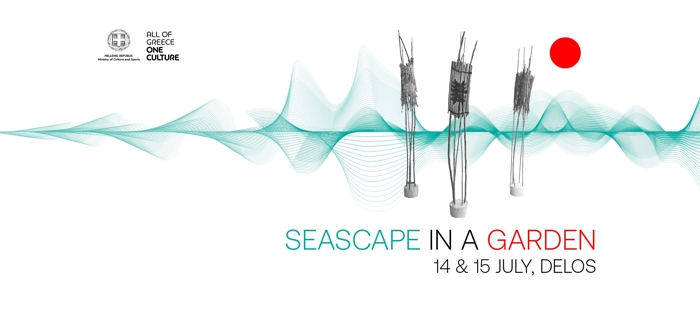
Seascape in a Garden is a unique arts & culture event being held July 14 and 15 on the Delos island archaeological site. It features a visual and sound installation as well as a live performance that aims to draw attention to “the protection and risks of our natural environment.” According to an event announcement, “Japanese and Greek cultural traditions converge in the sculptural installation by Greek artist Katerina Karatzaferi that is inspired by the Japanese tradition Komomaki and patterns of Greek weaving practices. Karatzaferi’s work converses with Ahmed Saleh’s sound installation and performance inspired by his personal aural memories from the city of his native Alexandria . In the historic and symbolic site of Delos, the two works acquire new meanings as they encounter archaeology, historic memory, nature and myth.” Seascape in a Garden is part of a program called All of Greece One Culture 2023, an initiative of the Hellenic Ministry of Culture and Sports. The event is being held in conjunction with the Mykonos Art Festival. The visual and sound installations will be open to visitors throughout the day on both July 14 and 15, with the live performances starting at 6:30 p.m. and lasting around 45 minutes. Admission to the event is free, but visitors will have to pay the regular entry fee to access the Delos island archaeological site.


